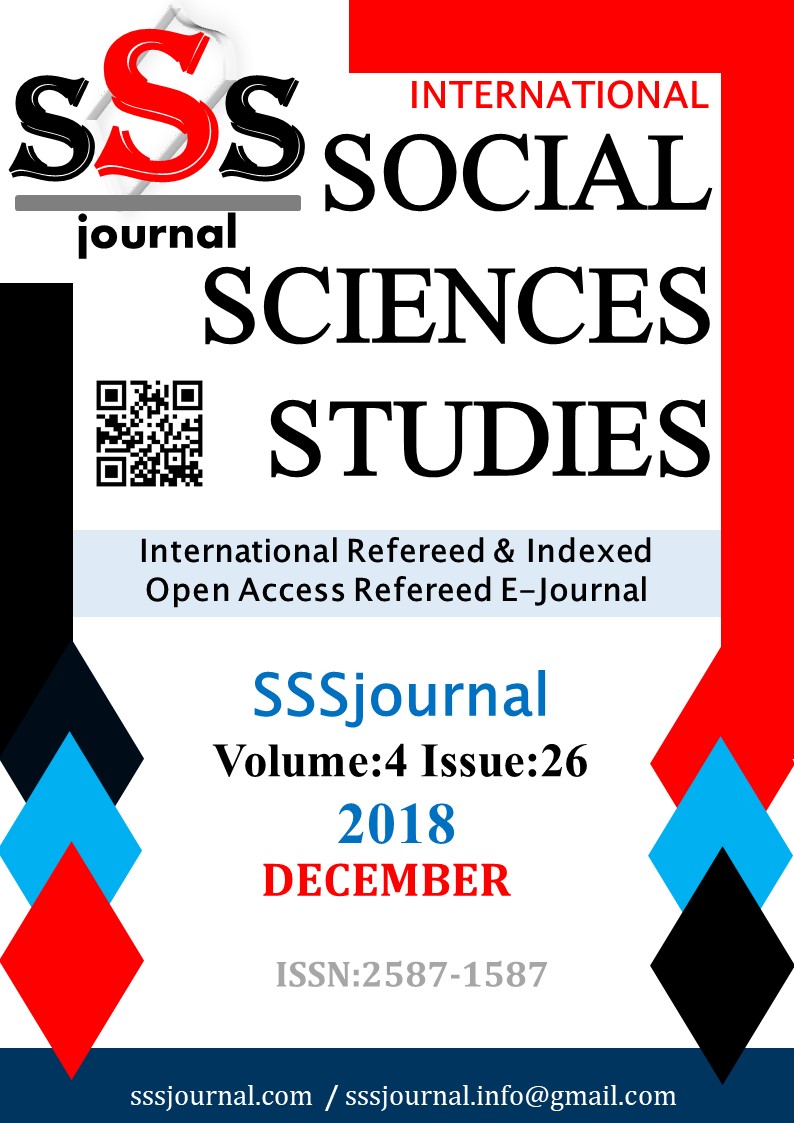Author :
Abstract
1960’lı yıllarda gündeme gelen postmodernizm hayatın tüm alanlarında olduğu gibi sanat alanında da büyük değişim ve dönüşümlere neden olmuştur. Bu süreçte resim sanatı kendinden önceki tüm geleneksel yaklaşımlardan koparak farklı bir sanat dilinin ortaya çıkmasına kaynaklık etmiştir. Genel olarak eklektik özellikleri barındıran bu estetik dil, temel olarak istikrarsızlık, parçalanma, heterojenlik gibi sanatsal eğilimleri barındırır. Değişen zaman algısının bir sonucu olarak ortaya çıkan bu eğilimler temelde zamansal boyutların (geçmiş, şimdi, gelecek) birbirinden ayrışması ya da kopmasıyla yakından ilişkilidir. Zaman konusu ile postmodern resim sanatı arasındaki ilişkileri ele alan bu makalede postmodern süreçte zamansal bütünlüğün parçalanması ve bu durumun resim sanatına yansıma biçimleri incelenecektir.
Keywords
Abstract
Postmodernism, which arose in the 1960’s, caused considerable alterations and transformations in the field of art just as in all aspects of life. Within this period, the art of painting has become a resource of emerging of a distinctive language of art by, separating from the previous traditional approaches. This language which contains eclectic characteristics, in general, contains artistic trends such as instability, deterioration, and heterogeneity as a basis. These trends, which emerged in consequence of changing time perception, are closely associated with decomposition or separation of temporal dimensions (past, present, future) in essence. In this article which addresses an issue of the relationship between the topic of time and the art of postmodern painting, fragmentation of temporal collectivity and the reflection of this condition to the art of painting in the postmodern period will be examined.
Keywords
- FİNEBERG J. (2014). 1940’tan Günümüze Sanat, Simber A., Göral Erinç Y. (çev.), 1. Basım, Karakalem
- FİNEBERG J. (2014). 1940’tan Günümüze Sanat, Simber A., Göral Erinç Y. (çev.), 1. Basım, Karakalem Kitabevi Yayınları, İzmir
- HARVEY, D. (1997). Postmodernliğin Durumu, Sungur S. (çev.), 1. Basım, Metis Yayınları, İstanbul
- HEARTNEY E. (2008) Sanat ve Bugün, Osman A. (çev.), 1. Basım, Agora Kitaplığı Yayınları, İstanbul
- JAMESON F. (2011). Postmodernizm ya da Geç Kapitalizmin Kültürel Mantığı, Nuri P., Abdülkadir G. (çev.), 1. Basım, Nirengi Kitap Yayınları, Ankara
- JAMESON F., LYOTARD J., HABERMAS J. (1994) Postmodernizm, Nemci Z. (der.), 2. Basım, Kıyı Yayınları, İstanbul
- KUSPİT D. (2010) Sanatın Sonu, Yasemin T. (çev.), 3. Basım, Metis Yayınları, İstanbul
- MURRAY C. (2009) 20. Yüzyılda Sanatı Okuyanlar, Suğra Ö. (çev.), 1. Basım, Sel Yayıncılık, İstanbul
- NASİO J. D. (2007) Jacques Lacan’ın Kuramı Üzerine Beş Ders, Özge E., Murat E. (çev.), 1. Basım, İmge Kitabevi, İstanbul
- SARUP M. (2004). Post-Yapısalcılık ve Postmodernizm, Abdülbaki G. (çev.), 2. Basım, Bilim Sanat Yayınları, Ankara
- FOUCAULT M. (1993) “Yazar Nedir”, Edebiyat Eleştiri Dergisi, Güz, 4. Özel Sayı, 1993, s. 98-111, İzmir Görsel Kaynaklar
- (Resim1) https://www.tate.org.uk/art/artworks/duchamp-fountain-t07573 (20.11.2018)
- (Resim2) https://uncrated.wordpress.com/2014/02/17/rauschenbergs-president/ (20.11.2018)
- (Resim3) https://www.tate.org.uk/art/artworks/baldessari-hope-blue-supported-by-a-bed-of-oranges-life- amid-a-context-of-allusions-t11845 (20.11.2018)
- (Resim4) https://www.guggenheim-bilbao.eus/en/exhibitions/david-salle-2/ (20.11.2018) (Resim5) http://www.davidsallestudio.net/plateD03.054.html (20.11.2018)
- (Resim6) http://www.spruethmagers.com/artists/john_baldessari@@viewq22 (20.11.2018) (Resim7) https://www.guggenheim.org/artwork/4380 (20.11.2018)
- (Resim8) http://www.artnet.com/artists/sherrie-levine/fountain-after-marcel-duchamp-RR5kE9Oty_TpMR- fU331pg2 (20.11.2018)
- (Resim9) http://www.artnet.com/usernet/awc/awc_workdetail.asp?aid=424262577&gid=424262577&cid= 75405&wid=424475779&page=1 (20.11.2018)
- (Resim10) https://curious.com/curios/12398#date (20.11.2018)
- (Resim11) https://www.metmuseum.org/art/collection/search/680563 (20.11.2018)
- (Resim12) https://www.blouinartsalesindex.com/auctions/Mike-Bidlo-5001625/s (20.11.2018)





